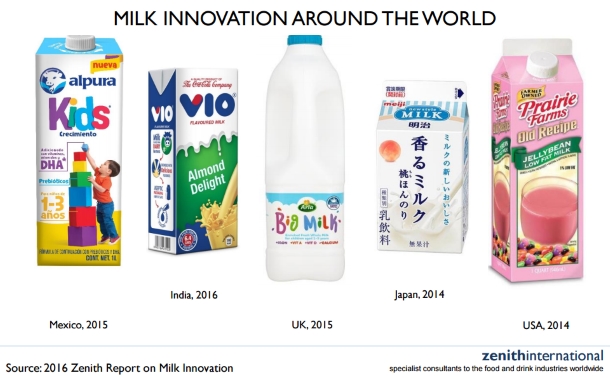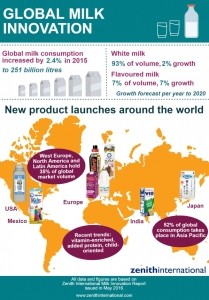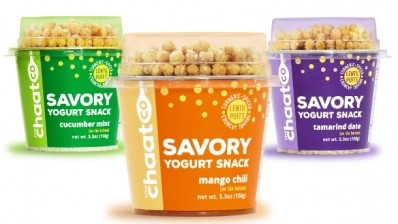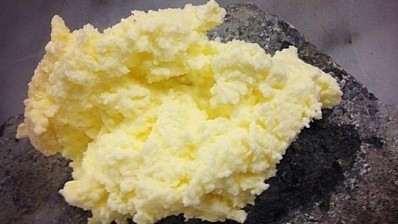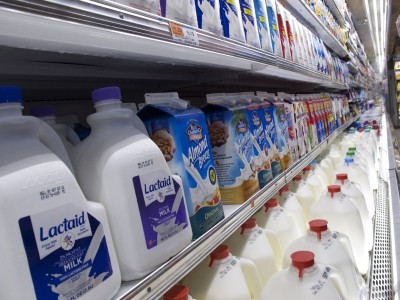Milk consumption growing through innovation: Zenith
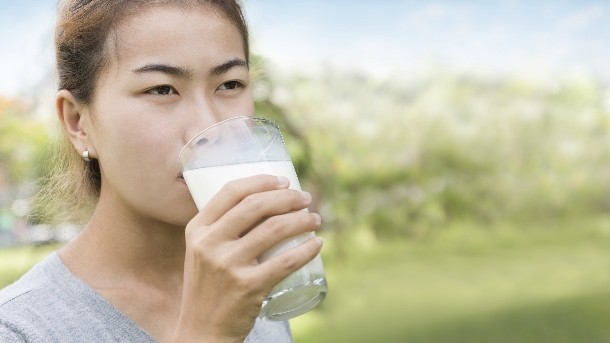
White milk remains by far the most commonly consumed type, capturing 93% of total volume, with flavored milk accounting for the remaining 7%. Both segments are forecast to strengthen in the years to 2020, with annual growth of 2% and 7% respectively.
The majority of consumption takes place in the Asia Pacific region, with volume in excess of 130bn liters, making up 52% of the global market. This is followed by West Europe, North America and Latin America, with a combined share of 35%.
Sales in all regions apart from North America increased in 2015.
Milk doing well in Asia
Esther Renfrew, market intelligence director at Zenith International, told DairyReporter that milk is doing relatively well.
“We know in some markets it's not doing particularly well, in some of the mature markets, but it's growing [in] Asia predominantly,” Renfrew said.
Renfrew added that while she studies trends in dairy, it’s important to know how the category stacks up against other beverages.
“I have to look at the wider category because you need to understand how milk fits in with carbonates and fruit drinks and tea and bottled water, to see how it is performing against other categories,” she said.
“It's a useful way of understanding in a wider context.
“As a category, milk has actually lost a bit of share of throat, and that's mainly due to bottled water. Milk was about a 13% share in 2010, and that's gone down to 12%. Water has gone from 14% to 17%, so people are looking to water for hydration, rather than milk.”
Water and milk
Renfrew said that the milk and water industries have similarities.
“They are looking to provide consumers something a bit more exciting, and also tap into trends that consumers are moving away from high sugar beverages into more healthy hydration, and that's why you're seeing both industries doing a lot around communication and positioning of their brands.
“Take milk in the US, there's a lot of work with the association with athletes about muscle recovery, and it's better to drink flavored milk post-workout rather than some of the other offerings in the market. They are vying for some of those growth opportunities.”
Global Dairy Congress
Renfrew will be sharing some of the information when she gives a presentation at the 10th Zenith Global Dairy Congress, which is being held in London June 27-29.
She said that the dairy industry would say milk has got more to offer in terms of its natural inherent nutritional value, “and what we'll hear about in the congress is what companies are trying to do to add value to milk in markets which are struggling a bit more.
Zenith 10th Global Dairy Congress highlights:
Monday June 27
Arla tour visit
Market insight briefings
Tuesday June 28
Presentations including Arla, Glanbia, Dairy UK, Lactalis, Yili, TH Milk, DFA, Mengniu, Land O Lakes, Tetra Pak
Gala industry dinner and innovation awards
Wednesday June 29
Round table discussions
Sessions on Dairy Innovation for Future Success, Entrepreneurship and Investment
“FairLife milk is a classic example in the US where they are invigorating the category by adding value to their milk and the consumers are understanding that.”
FairLife will be one of the many global companies presenting at the congress, in the Dairy Innovation for Future Success session.
Looking at trends
Renfrew said that the congress tries to look at the global picture for the dairy industry, and that there are attendees from around the world.
“We work on trying to understand more on the consumer side. We try and steer away from production, milk collection and quotas. We look at what the consumer is interested in buying, what the trends are from that side, so it's very much about the brands, and the communication around that.”
So is it easy for companies to get the message about milk across to the public?
“It depends on the market,” Renfrew said.
“The challenge in the fresh milk market is the whole distribution of fresh milk and having it chilled. You might not be able to compete, you might not be able to go into gyms for example, because they might not necessarily have refrigeration, whereas a sports drink can be in a vending machine.”
Making milk relevant
She added that the challenge is in making milk an exciting drink.
“There are brands that have done that. It's trying to gain those people to move them into continuing consumption of milk.
“Some countries are very successful at doing that, Scandinavian countries are very successful, it's a heritage thing. Milk is seen as being very good for you so adults will drink it. In the UK, it's in tea and lattes, but you don't tend to drink it on its own as an adult.”
Balance between innovation and marketing
Renfrew said that in Asia growth in milk is partly due to the population understanding the properties of milk.
“You've got a lot of school milk programs, in Indonesia, the Philippines, in China, that are doing really well, and dairy drinks are doing phenomenally well in those markets and growing very fast, because they understand the functional benefits.
But is there a danger that the growth in Asia will slow down, as is the case in traditional, mature markets? Renfrew doesn’t think so.
“The companies that are active in those markets are able to look at what's happening in Europe and learn from that, and I can see that's happening from some of the Chinese dairy companies who have grown tremendously over the last five to 10 years.
“I think they are aware of making sure that they don't become complacent about how they position in the category.”
She added that there are still many opportunities in mature markets.
“Without a doubt, what we're seeing is some of the innovation that's helping, whether it be innovation towards child-oriented products, or more protein-enriched products, or more exciting and unusual flavors, those types of innovation are helping the dairy category grow. But it's not without investment.”
Innovation in other areas
In the cheese industry, products such as high-protein cheese, flavored cheese, cheese specifically for snacking, and heart-shaped cheese are among the recent trends, according to the report.
Renfrew says that in China, the cheese market is growing through foodservice but retail is growing relatively fast.
“It’s from a very small base, but the way that they position cheese, is that they add sweet flavors to it, so they add strawberries and so forth, so formulations have been very important for manufacturers wanting to go into the Chinese market,” Renfrew said.
“It's not how we would see cheese in Europe, but they've adapted cheese products for the Chinese markets, and if you don't do that then you're not successful.
“Dairy lends itself to being able to do that, it's why you get such a variety of different domestic consumption around the world.”
She added that the dairy industry is quite new in some of the Asian markets, which means that the future can be influenced by the companies operating there.
Added value
Innovation is widespread in the industry, the report says, with manufacturers striving to capture market share through offering consumers added value.
Innovation trends emerging in recent years include vitamin-enriched milks, confectionery-inspired flavors and premium positioning to weight-loss and gender-focused products.
Using data from 72 countries, milk came in third on the list of global drinks growth from 2010-2015, with 19bn liters, behind only tea (55bn) and bottled water (97bn).
Report nine key trends:
- Added protein
- Child-oriented
- Vitamin and mineral enriched
- Gender focus
- Indulgence
- Lactose-free
- Low-fat
- Sports nutrition
- Weight management
In 2010, milk had a 13% share of the drinks market, at 216bn liters, and while that market share in 2015 had shrunk to 12%, the actual amount rose to 233bn liters.
Other recent developments in dairy include high-protein yogurt and squeezable children’s yogurts.
Report covers 69 brands
The report offers an overview of the global milk market, with market insights covering global and specific regional trends as well as challenges and opportunities.
The 2016 Zenith Report on Milk Innovation contains profiles on 69 brands launched between 2014 and 2016 across five regions under seven categories.
